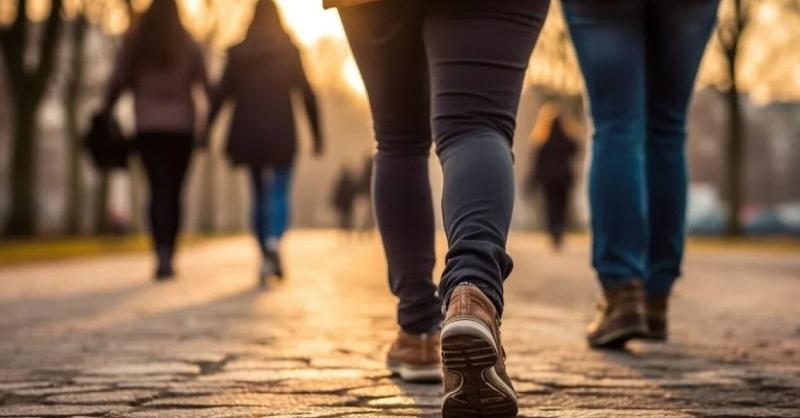Lumbar Spinal Stenosis (LSS) is a common, often debilitating condition affecting millions worldwide. Characterized by the narrowing of spaces within the spine, which can pressure the nerves traveling through the lower back, LSS presents a significant challenge in terms of management and quality of life. Amidst various therapeutic approaches, a simple yet vital question arises: Can walking, a fundamental human activity, be beneficial for those suffering from LSS?
Understanding the relationship between walking and LSS is not just a matter of scientific curiosity but a necessity for millions seeking relief and a better quality of life. This article delves into the medical understanding of LSS, explores the role of exercise, particularly walking, and offers guidance on implementing walking as a therapeutic tool.
Understanding Lumbar Spinal Stenosis
Pathophysiology and Causes:
Lumbar Spinal Stenosis occurs when the spinal canal narrows, often due to age-related changes like osteoarthritis. The narrowing can compress the nerves, leading to symptoms like pain, numbness, or weakness, primarily affecting the lower back and legs.
Risk Factors:
Age is a primary risk factor, with most cases appearing in individuals 50 and older. Other factors include a history of spinal injury, congenital spinal deformity, and lifestyle elements that put extra strain on the spine, such as certain occupations or activities.
Symptoms and Diagnosis:
Symptoms vary but often include lower back pain, leg pain, numbness, and decreased physical endurance. Diagnosing LSS typically involves a combination of medical history, physical examination, and imaging tests like MRI or CT scans.
The Role of Exercise in Managing Lumbar Spinal Stenosis
Exercise is a cornerstone in the management of LSS. Regular physical activity is known to improve overall spine health and can reduce the symptoms associated with LSS. While exercise cannot reverse the structural changes in the spine, it can play a crucial role in managing pain and improving function.
Walking: A Potential Therapy for LSS
Walking is a low-impact, accessible form of exercise that can significantly benefit individuals with LSS. This section will focus on how walking can alleviate LSS symptoms, backed by scientific evidence and possibly enriched with personal anecdotes or case studies for a more relatable understanding.
How Walking Helps in Lumbar Spinal Stenosis
Mechanisms:
Walking encourages gentle, repetitive movement of the spine, which can help maintain flexibility and strength. It enhances blood flow to the spinal structures and can aid in the reduction of inflammation, a key factor in pain management.
Improvement in Symptoms:
Regular walking can lead to significant reductions in pain and improved mobility. It can also increase endurance, making daily activities more manageable for those with LSS.
Comparison with Other Forms of Exercise:
While activities like swimming and cycling are also beneficial, walking stands out due to its simplicity and accessibility. It requires no special equipment and can be easily integrated into daily routines.
Best Practices for Walking with Lumbar Spinal Stenosis
Walking Techniques:
Proper technique is crucial. Walking with a straight posture and avoiding overstriding can help minimize stress on the lower back. Using supportive footwear is also recommended.
Starting a Routine:
Begin with short, frequent walks, gradually increasing duration and intensity. It’s important to listen to your body and avoid pushing through pain.
Preventing Overexertion:
Recognizing the difference between good pain (mild discomfort from exercise) and bad pain (indicative of overexertion or injury) is key. Stop and rest if pain worsens.
Other Beneficial Exercises and Therapies for LSS
In addition to walking, exercises like stretching, yoga, and strength training can be beneficial. Physiotherapy plays a significant role in providing tailored exercise regimens and pain management strategies. In some cases, especially when conservative treatments fail to provide relief, surgery may be considered.
Precautions and Considerations
While walking is generally safe, individuals with severe LSS should proceed with caution. Always consult with a healthcare professional before starting any new exercise program. If walking causes significant pain, numbness, or weakness, it’s important to stop and seek medical advice.
Conclusion
Walking offers a simple yet effective means to manage symptoms of Lumbar Spinal Stenosis. It’s a therapy that’s accessible, cost-effective, and beneficial for overall health. However, it should be part of a comprehensive treatment plan that includes various forms of exercise, lifestyle modifications, and medical management as needed. Always consult with a healthcare provider to tailor an approach that’s right for your specific condition.
Remember, managing LSS is about finding the right balance between activity and rest, and walking can be a valuable part of that equilibrium.
